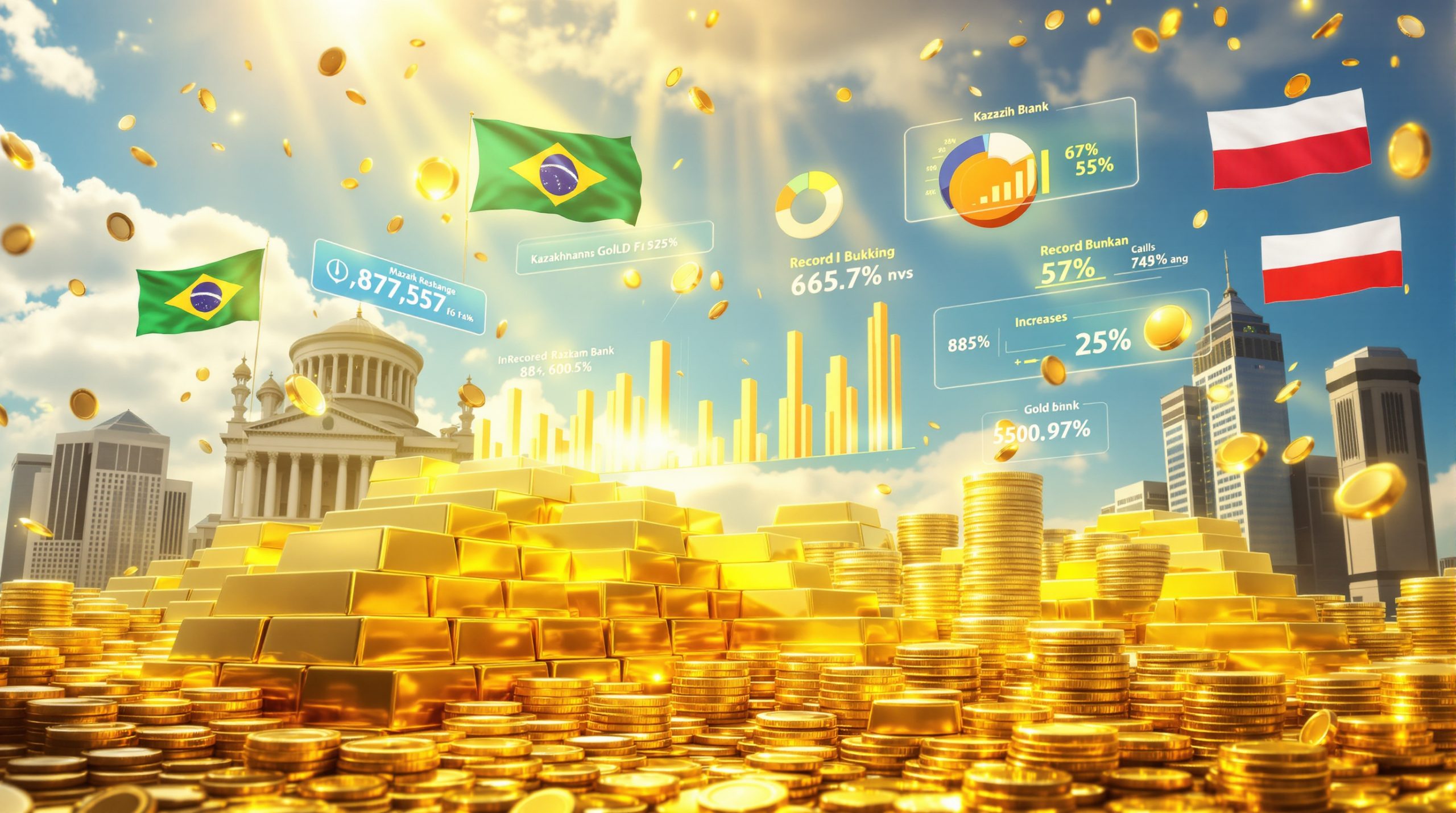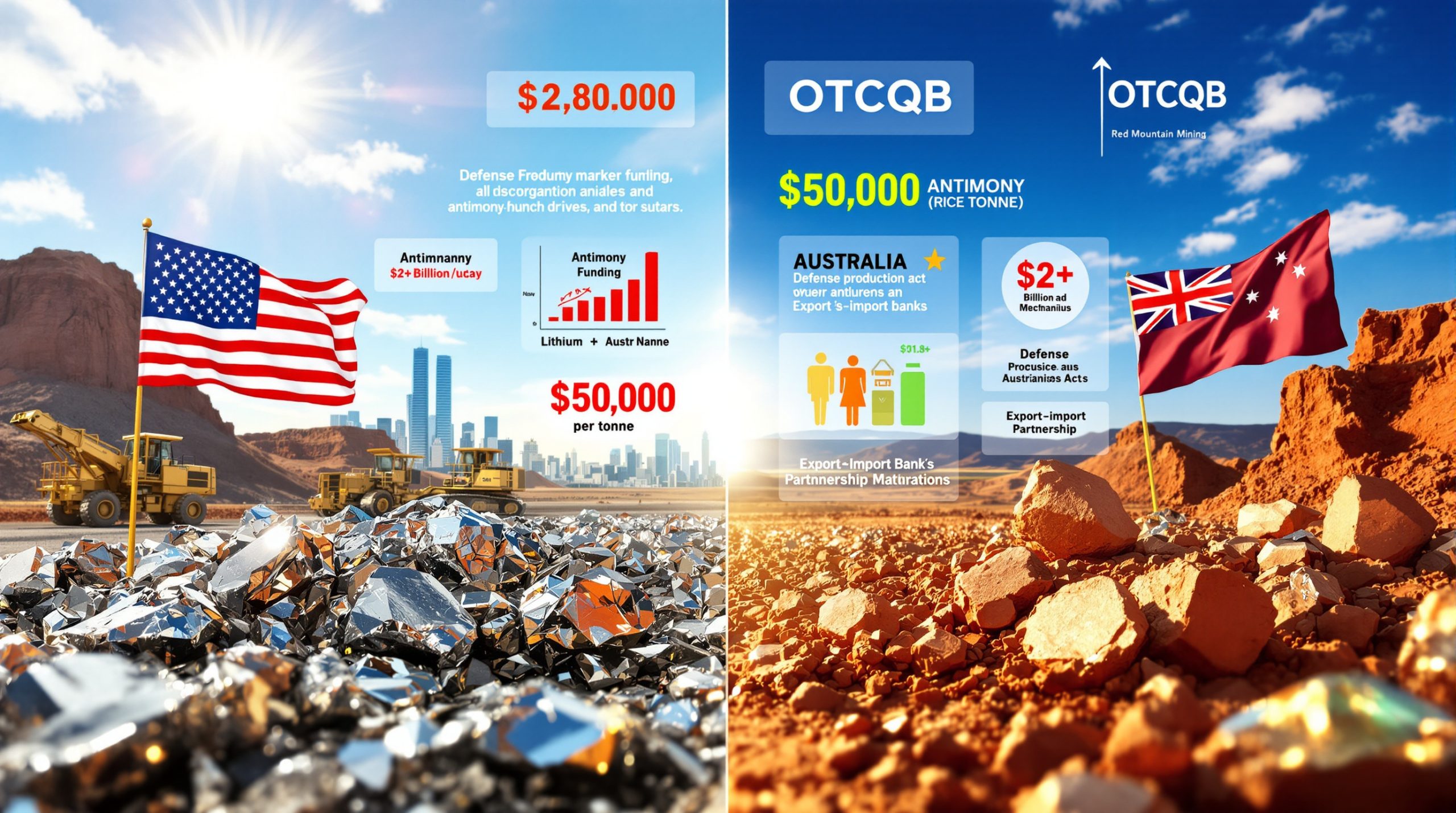The Contrarian Approach to Platinum Investing: Finding Hidden Value
Investing against the crowd has historically yielded exceptional returns for those with the patience and conviction to withstand short-term market sentiment. Platinum presents one of today's most compelling contrarian opportunities, with fundamentals suggesting significant potential upside despite years of underperformance.
Understanding Contrarian Platinum Investment
Contrarian investing involves deliberately taking positions opposite to prevailing market sentiment. In the platinum market, this approach means investing in an asset that has been largely overlooked while investors focus on more popular options like gold, broad market indices, or technology stocks.
The platinum market exhibits classic contrarian characteristics: extended price consolidation, bearish investor sentiment, and fundamental supply constraints that remain underappreciated by mainstream investors.
Why Platinum Presents a Unique Contrarian Opportunity
Several factors make platinum particularly attractive for contrarian investors:
- Historical price relationship with gold has inverted (platinum typically traded at a premium)
- Current undervaluation compared to historical norms
- Declining primary mine supply, particularly from South Africa
- Increasingly tight above-ground inventory levels
- Potential for demand recovery across multiple sectors
Many investors remain unaware that platinum is actually about 30 times rarer than gold in the Earth's crust. This fundamental scarcity, combined with its industrial utility, historically justified platinum's premium pricing relative to gold.
Platinum vs. Traditional Investment Options
The Gold-Platinum Price Relationship
Platinum has historically traded at a premium to gold due to its greater scarcity and industrial utility. However, this relationship has dramatically inverted in recent years:
| Metal | Current Price | Historical Price Relationship | Current Relationship |
|---|---|---|---|
| Platinum | $1,335/oz | Typically 1.1-1.3x gold price | Trading at ~0.65x gold price |
| Gold | $2,050/oz | Historically below platinum | Trading at a significant premium |
This price inversion represents one of the most compelling aspects of the contrarian platinum thesis. If platinum were to simply return to its historical relationship with gold, it would imply a price of over $2,200 per ounce—a significant potential upside from current levels.
The Small Market Advantage
The platinum market's relatively small size creates both challenges and opportunities:
- Annual platinum production: Approximately 6 million ounces
- Annual gold production: Approximately 90 million ounces
- Market capitalization: Fraction of gold market
This smaller market size means that when supply/demand fundamentals shift, price movements can be more dramatic than in larger commodity markets. For contrarian investors, this volatility represents opportunity rather than risk.
"The beauty of these small markets is that they're too small for the institutions to participate in meaningful ways. When fundamentals turn positive, the price movements can be explosive because there simply isn't enough supply to meet renewed demand."
Why Has Platinum Been Overlooked?
The Long Sideways Pattern
Platinum experienced nearly a decade of sideways price action before its recent breakout, creating several challenges for investors:
- Professional money managers couldn't afford the extended underperformance
- Passive investment flows dominated market capital allocation
- Technology and growth stocks captured most active investment attention
- Lack of patience for cyclical commodity investments
This extended consolidation phase has tested investor patience but has also created the foundation for a potentially significant price move as fundamental catalysts emerge.
Common Misconceptions About Platinum Demand
Several misconceptions have contributed to bearish sentiment around platinum:
-
Overestimation of electric vehicle adoption rates – The transition to electric vehicles is happening more gradually than many predicted
-
Underestimation of hybrid vehicle growth – Hybrid vehicles, which use platinum catalysts, represent a significant growth sector
-
Pessimistic industrial demand forecasts – Industrial applications for platinum continue to expand beyond traditional uses
-
Underappreciation of jewelry and investment demand – These sectors have shown resilience and growth potential
The narrative around platinum has focused almost exclusively on the threat from electric vehicles, while ignoring the metal's other applications and the reality that internal combustion engines will remain a significant part of the global vehicle fleet for decades.
Supply Fundamentals Driving the Platinum Thesis
South African Production Challenges
South Africa accounts for approximately 70% of global platinum production, creating significant supply concentration risks:
- Aging mines with declining ore grades
- Increasing production costs
- Infrastructure challenges (electricity, water)
- Labor relations issues
- Limited new development pipeline
The South African platinum mining industry innovation faces serious structural challenges that cannot be quickly resolved. Power shortages have become endemic, with mining operations frequently disrupted by load shedding. Water access presents another critical constraint, while labor costs continue to rise faster than productivity.
Mine Supply Trajectory
Recent industry forecasts indicate significant supply challenges:
- Platinum mine supply declining at approximately 6% annually
- Limited new projects in development
- Long lead times (5-10 years) for new mine development
- Recycling volumes disappointing expectations
The platinum mining industry has underinvested in new projects for years due to poor economics and challenging operating environments. This capital discipline may benefit shareholders in the short term but creates the conditions for potential supply shortages.
Above-Ground Inventory Situation
The market's buffer against supply disruptions has been steadily eroding:
- Inventory levels approaching multi-decade lows (estimated at less than 3 months of global demand)
- Remaining inventory increasingly concentrated in Chinese hands
- Strategic reserves not readily available to global markets
- Some countries approaching "hand-to-mouth" supply situations
This inventory situation creates vulnerability to supply disruptions or demand spikes. Unlike gold, which has significant above-ground stocks, platinum's industrial consumption means less metal is available for redeployment during shortages.
The Three-Pillar Demand Structure for Platinum
Platinum demand comes from three roughly equal sectors:
1. Automotive Catalytic Converters
- Accounts for approximately one-third of platinum demand
- Essential for emission control in gasoline and diesel engines
- Growing importance in hybrid vehicle systems
- Tightening emissions standards globally increase platinum loadings per vehicle
While electric vehicles don't require platinum catalysts, the transition to full electrification will take decades. Meanwhile, hybrid vehicles—which do use platinum—are seeing accelerating adoption as a bridge technology.
2. Jewelry Applications
- Accounts for approximately one-third of platinum demand
- Particularly strong in Asian markets, especially China and Japan
- Potential for substitution from gold as price differential persists
- Cultural significance in many markets remains strong
The Chinese platinum jewelry market has been under pressure in recent years but shows signs of stabilization. Any economic recovery in China could drive significant renewed demand, especially as US‑China trade impacts continue to evolve.
3. Industrial Applications
- Accounts for approximately one-third of platinum demand
- Chemical catalysts for various industrial processes
- Glass manufacturing, particularly for displays and fiber optics
- Electronics applications
- Medical devices and pharmaceuticals
- Hydrogen fuel cell technology
Industrial applications for platinum continue to expand, with hydrogen technologies representing a potential growth catalyst. Platinum's catalytic properties make it essential for green hydrogen production and fuel cell technologies, further highlighting the importance of critical minerals for energy transition.
Investment Demand: The Fourth Pillar
Investment demand has historically been more volatile but can significantly impact price:
- Physical investment (bars and coins)
- ETF holdings
- Futures market positioning
Investment demand often acts as a leading indicator for commodity price cycles. Recent increases in platinum ETF holdings suggest growing investor interest in investment opportunities 2025.
Identifying Platinum Market Inflection Points
Key Signals for Contrarian Investors
Successful contrarian investing requires identifying when a market is poised for reversal:
- Extended period of price consolidation (base building)
- Extremely bearish sentiment across market participants
- Supply constraints becoming evident
- Inventory drawdowns accelerating
- Initial signs of investment interest returning
The platinum market has checked all these boxes, suggesting the potential for a major trend change. Contrarian opportunities are often most compelling when an asset has been "left for dead" by mainstream investors.
The Breakout Pattern in Platinum
After nearly a decade of sideways trading, platinum's recent price action displays classic characteristics of a potential breakout:
- Longer consolidation periods typically lead to more explosive upside moves
- Initial moves often driven by investment rather than fundamental demand
- Price acceleration tends to attract additional investment flows
- Breakouts from long-term bases often signal multi-year trend changes
Technical analysts note that the longer an asset trades in a tight range, the more significant the eventual breakout tends to be. Platinum's extended consolidation phase has created substantial potential energy for a sustained upward move.
How Investors Can Access the Platinum Market
Physical Platinum Investment Options
For investors seeking direct exposure to platinum prices:
- Physical platinum bars and coins (available in various sizes)
- Platinum ETFs backed by physical metal
- Platinum certificates from reputable institutions
Physical platinum investments provide direct exposure to price movements without the operational risks associated with mining companies. However, storage and insurance costs must be considered.
Platinum Mining Equities
Mining companies offer leveraged exposure to platinum prices:
- Pure-play platinum producers
- Diversified precious metals miners with platinum exposure
- Junior exploration companies with platinum projects
Mining equities typically provide operational leverage to metal prices. A 10% increase in platinum prices might translate to a 20-30% increase in mining company profits, depending on cost structures and production profiles.
Related Platinum Group Metals
The platinum group metals (PGMs) often move together and offer related opportunities:
- Palladium – Used primarily in gasoline catalytic converters
- Rhodium – Essential for emissions control, extremely scarce
- Iridium – Critical for specialty industrial applications
- Ruthenium – Used in electronics and chemical catalysts
- Osmium – The densest naturally occurring element
Each PGM has its own supply/demand dynamics, but they share many production sources and often experience correlated price movements. Industry experts frequently discuss these opportunities at events like the global mining expo insights conferences.
Rhodium: The Ultimate Contrarian Metal Play
The Rhodium Market Structure
Rhodium represents an even more specialized contrarian opportunity:
- Extremely small market (approximately 1 million ounces annually)
- Primarily a byproduct of platinum mining (85% from South African platinum mines)
- Essential for automotive catalytic converters
- Limited investment vehicles available
- Historically extreme price volatility
Rhodium's small market size makes it particularly vulnerable to supply disruptions. When South African platinum production faces challenges, rhodium supply is directly impacted.
Rhodium's Historical Performance Patterns
Rhodium has demonstrated remarkable cyclicality:
- Five major bull markets in the past 40 years
- Average bull market gains of approximately 1,000%
- Extreme illiquidity during supply shortages
Rhodium hit a record high of over $30,000 per ounce in early 2021 before correcting significantly. This extreme volatility highlights both the potential rewards and risks of investing in ultra-niche commodity markets.
Investment Caution: Rhodium should only be considered by sophisticated investors comfortable with extreme volatility and limited liquidity. Position sizing is critical when dealing with markets this small and volatile.
Risk Factors in Contrarian Platinum Investing
Timing Challenges
The primary risk in contrarian investing is timing:
- Being too early can result in opportunity cost and drawdowns
- Capital may be tied up for extended periods
- Psychological challenge of maintaining conviction
Contrarian positions often require significant patience. Investors must be prepared for their thesis to take time to play out and potentially experience periods of doubt when the broader market disagrees with their position, as Platinum takes contrarian stance on various market sectors.
Market Liquidity Considerations
Smaller markets present liquidity challenges:
- Wider bid-ask spreads, particularly in physical markets
- Potential for sharp price movements on relatively low volume
- Limited options for position sizing in institutional portfolios
These liquidity constraints can work to the advantage of smaller investors who don't need to worry about market impact when establishing or exiting positions.
Fundamental Risk Factors
Several factors could undermine the platinum thesis:
-
Faster-than-expected EV adoption – Could reduce automotive demand more quickly than anticipated
-
Technological substitution – Development of platinum alternatives for key applications
-
Prolonged global economic weakness – Impacting industrial and jewelry demand
-
South African production stabilization – Resolving current challenges and increasing output
Investors should monitor these risk factors closely and be prepared to reassess their thesis if fundamental conditions change significantly.
Portfolio Construction with Contrarian Investments
Time Horizon Considerations
Contrarian investing requires a longer time horizon:
- Typical investment cycles of 3-5 years
- Initial period often characterized by volatility and drawdowns
- Major returns often concentrated in later stages
Investors must match their time horizon to the nature of contrarian opportunities. These investments are poorly suited for short-term trading strategies.
Portfolio Allocation Strategies
Prudent position sizing is essential for contrarian investments:
- Smaller allocations to more speculative positions
- Core positions in physical metals or established producers
- Satellite positions in more leveraged opportunities
A diversified approach to platinum exposure might include a core position in physical platinum or an ETF, complemented by select mining equities for additional leverage to rising prices. As noted by contrarian investing experts, this balanced approach helps manage risk while maintaining upside potential.
Diversification Across Contrarian Themes
Platinum represents just one contrarian opportunity in the commodity space:
- Other overlooked metals (tin, uranium)
- Energy services (offshore drilling, seismic exploration)
- Traditional commodities with supply constraints
Contrarian investors often find that several unloved sectors turn simultaneously as capital rotates from overvalued areas of the market to undervalued ones.
The Psychology of Successful Contrarian Investing
Embracing Patience as a Competitive Advantage
Successful contrarian investing demonstrates the importance of patience:
- Willingness to endure periods of underperformance
- Focus on fundamental supply/demand imbalances rather than short-term price action
- Recognition that market timing is challenging
- Comfort with being "too early" rather than too late
In a market environment dominated by algorithmic trading and short-term thinking, the ability to maintain a long-term perspective becomes a significant competitive advantage.
Finding Edge in Overlooked Market Segments
Contrarian investors often find opportunity in market segments that are:
- Too small for institutional investors to allocate meaningful capital
- Too illiquid for short-term traders to efficiently access
- Too cyclical for growth-focused investors to appreciate
- Too specialized for generalist analysts to understand deeply
This approach requires developing specialized knowledge in niche areas and having the conviction to act when others are unwilling to engage.
Frequently Asked Questions About Platinum Investing
Is platinum a good investment in 2025?
Platinum presents a compelling investment case due to tightening supply fundamentals, potential demand recovery, and its historical undervaluation relative to gold. However, investors should consider their time horizon and risk tolerance before investing, as significant volatility should be expected.
How does platinum compare to other precious metals?
Platinum is rarer than gold and has more industrial applications. It has historically traded at a premium to gold but currently trades at a significant discount. Unlike silver, platinum's market is smaller and more concentrated in terms of both supply and demand.
What factors could drive platinum prices higher?
Key catalysts include: continued mine supply challenges in South Africa, growing hybrid vehicle adoption, Chinese jewelry demand recovery, increased investment interest, and declining above-ground inventories. Any one of these factors could shift the supply/demand balance significantly.
What are the best ways to invest in platinum?
Investors can gain exposure through physical platinum, platinum ETFs, mining stocks, or platinum futures. Each approach offers different risk/reward profiles and levels of leverage to platinum prices. Individual investors should match their approach to their risk tolerance and investment objectives.
Disclaimer: This article is for informational purposes only and does not constitute investment advice. Commodity investments involve significant risks including the potential for substantial losses. Past performance is not indicative of future results. Always conduct thorough research and consider consulting a financial professional before making investment decisions.
Ready to Capitalise on the Next Major Mineral Discovery?
Stay ahead of the market with Discovery Alert's proprietary Discovery IQ model, which instantly identifies significant ASX mineral discoveries and turns complex data into actionable insights. Explore historic examples of exceptional returns from major discoveries by visiting our dedicated discoveries page.




